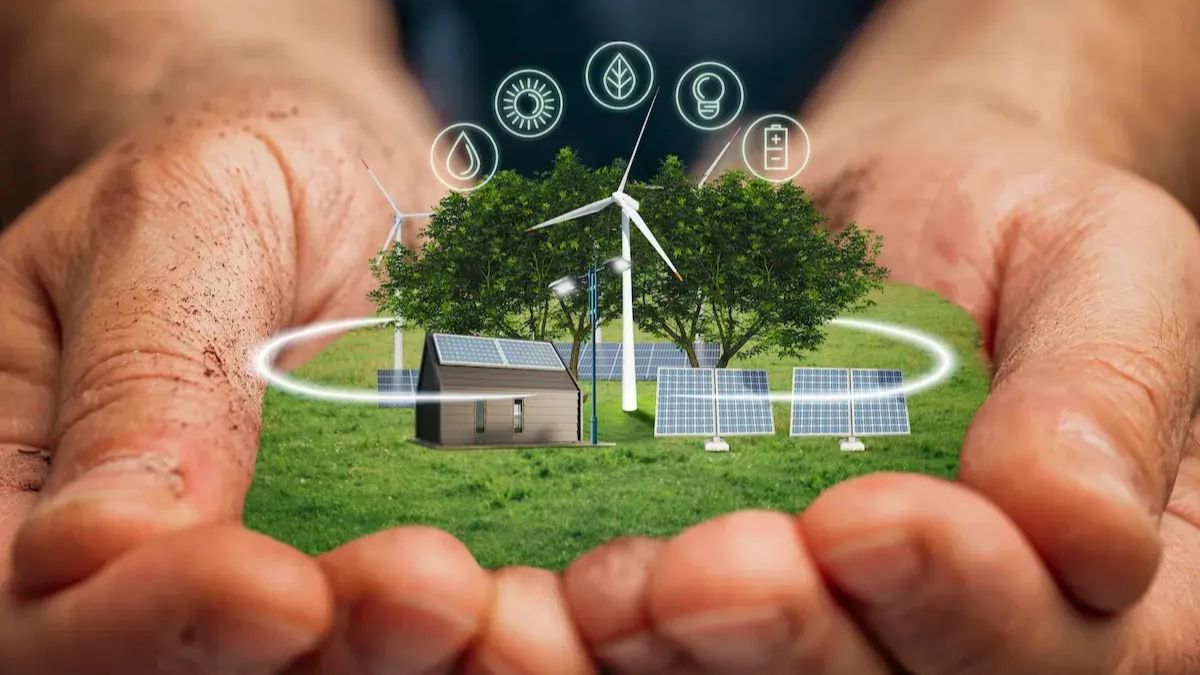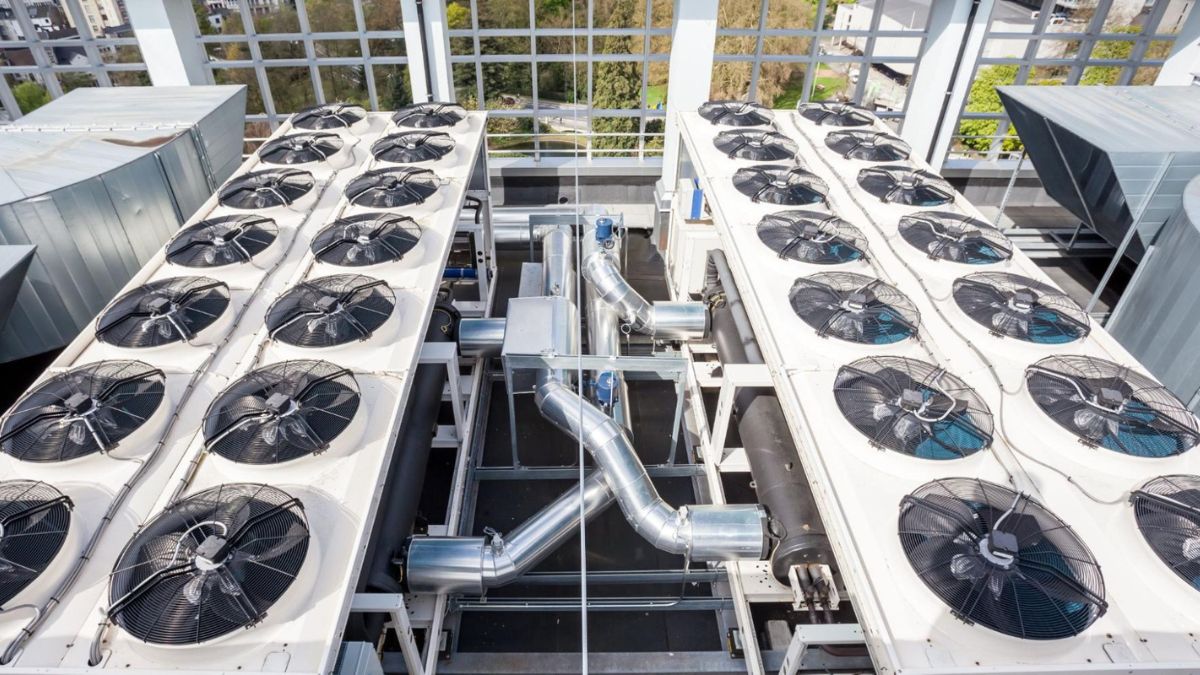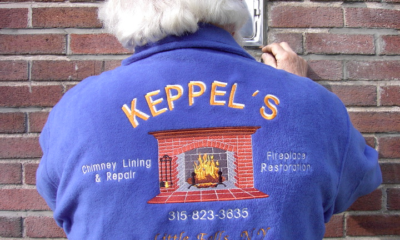Home
How Communities Rebuild: Real-Life Steps and Strategies for Faster Storm Recovery
The Widespread Effects of Storms on Communities
Severe storms are among the most disruptive events a community can face, leaving behind damage that is often immense and far-reaching. Beyond the immediate destruction caused to homes and local businesses, storms frequently damage public roads, communications systems, water supplies, and the electrical grid. The National Oceanic and Atmospheric Administration reported that U.S. weather disasters cost more than $165 billion in 2022, showing the widespread fallout. Residents may suddenly lose access to food, water, emergency services, and safe shelter. These cascading effects force neighborhoods to think strategically about short-term recovery and long-term prevention. In these moments, access to reliable utility restoration services is crucial, helping to restore basic services that families and businesses need to get back on their feet.
The effects of a significant storm rarely stop at the initial impact. When schools close for days, businesses cannot reopen, roads remain blocked or flooded, and communities experience substantial and prolonged hardship. Recovery becomes a race against time, as delays in restoring electricity, clean water, and transportation infrastructure lead to extended displacement for families, spoiled food, decreased economic activity, and even health hazards from sewage and mold. Therefore, quick access to skilled utility restoration services isn’t just a convenience—it’s often necessary to ensure every community resident’s health and safety. These expert teams possess specialized skills and equipment designed to handle complex disasters, allowing neighborhoods to move from uncertainty to recovery faster and more confidently.
First Actions After the Storm: Safety Comes First
When the skies clear but debris still litters streets and property, the priority for every resident should be personal and communal safety. Before anything else, listen to local emergency broadcasts and official advisories to confirm that I’m emerging and begin surveying damage. Hazards are often hidden—a branch may conceal a downed power line, flooding may mask unstable roadways, and structural weaknesses can turn a home into a danger zone. It’s a good practice to use a flashlight when entering darkened rooms and to avoid wading through standing water whenever possible. Ensuring you have an emergency kit with flashlights, potable water, non-perishable food, first aid supplies, and communication devices improves your ability to act quickly and safely.
Effective communication cannot be overstated during this stage. Families should have a plan for accounting for each member’s location and health. Community leaders who establish communication trees or use group messaging platforms can more efficiently identify urgent needs and mobilize resources. When neighbors reach out to check on each other, it not only catches emergencies faster but also offers much-needed emotional reassurance after a harrowing event. Local officials and first responders in many towns set up designated check-in points or hotline numbers, underscoring how important communication is for accelerating beach-and-rescue efforts and the first steps toward recovery.
Assessing Damage: Document and Report
After ensuring personal safety, the focus shifts to carefully documenting damage. This process goes beyond simply walking the property—capturing thorough records through photographs and videos, noting everything from roof shingles blown off to water stains, damaged appliances, and downed trees. These visual records are invaluable for insurance claims, often representing the difference between a smooth reimbursement process and frustrating delays. It’s equally important for renters to notify landlords or property managers with photographic evidence. Many insurance companies now allow direct digital upload of evidence to streamline reviews, making accuracy and detail all the more critical.
Reporting property damage quickly helps authorities grasp the full scale of community needs. Many municipalities offer online forms or smartphone apps for submitting damage reports. Others have public works hotlines where citizens describe road blockages, fallen power lines, or sewage issues. By engaging with these systems immediately, individuals speed up their repairs and help prioritize which utility and road restoration projects are tackled first, benefiting the community.
Professional Restoration Services: Why They Matter
Restoration after a storm is more than just sweeping up and fixing windows. On a technical level, professionals bring expertise in water extraction, structural drying, mold remediation, and electrical system evaluation—tasks that are tricky to handle without training. For example, improper drying after a flood can lead to toxic mold growth inside wall cavities, causing health problems weeks or months later. When qualified experts step in, they use specialized equipment like moisture meters, disinfectants, and heavy-duty pumps to address every aspect of the recovery process.
These professionals help homeowners and businesses navigate complicated insurance paperwork, adhere to evolving building codes, and coordinate with utility companies for safe power restoration. Restoring large sections of neighborhoods at once helps ensure quality, safety, standards, and speed. Their experience managing high-stress, high-stakes situations can offer much-needed peace of mind when families are reeling from loss and uncertainty.
Federal, State, and Local Support for Storm Recovery
Adequate recovery is almost always a collaborative effort that extends far beyond local action. Federal, state, and local agencies, such as FEMA, play a central role in scaling up disaster response. Programs like the Individual Assistance Program or Public Assistance Program provide grants and loans for housing, repairs, and rebuilding infrastructure. These agencies also provide logistical expertise, deploying field staff to coordinate food and clean water distribution, set up shelters, and supply medical resources.
On a smaller scale, city and town governments quickly re-open shelters, establish supply distribution sites, and organize volunteer groups to help clear debris. Access to these resources can sometimes be overwhelming, especially for first-time survivors, but early registration with the appropriate agencies leads to faster support. Simple steps, such as knowing where your nearest emergency shelter is located or which documents you’ll need for assistance, can dramatically reduce recovery time and stress for your household and neighbors.
How Neighbors and Local Leaders Drive Rapid Recovery
One hallmark of communities recovering well is that residents and local leaders can unite. Regular neighborhood meetings, online message boards, and local advocacy groups fill gaps left by first responders and government agencies. A well-organized network of volunteers—perhaps a group of local teens with chainsaws or a church gearing up for meal deliveries—can address immediate and specific regional needs, sometimes hours or days before larger organizations arrive.
Technology has made this easier. Tools like private social media groups, group SMS, or mobile apps for mutual aid help coordinate everything from meal trains for families without kitchens to coordinated cleanup days. Even simply sharing information, such as which streets are accessible or which stores have reopened, reduces confusion and the risk of redundant or wasted effort. Social cohesion is one of the strongest predictors of a community’s ability to weather a disaster and bounce back quickly.
Five Steps to Prepare for Future Storms
- Formulate a detailed emergency plan, noting roles for each family member, evacuation routes, and emergency contacts—including out-of-area relatives in case local lines are overloaded.
- Invest in home improvements that strengthen resistance to winds and water damage, such as reinforced roofs, storm shutters, and elevated electrical systems.
- Stock an easily-accessible emergency kit with essentials: at least three days’ worth of non-perishable food, gallon-per-person-per-day of bottled water, flashlights, batteries, medications, and photocopies of critical documents.
- Digitally back up necessary paperwork, including deeds, passports, wills, and insurance policies, and store hard copies in waterproof, portable containers.
- Join local safety drills, sign up for weather alerts, and stay active in neighborhood preparedness groups to ensure your readiness evolves alongside changing risks.
Continuing Support for Emotional and Mental Health
Surviving a storm extends far beyond cleaning up debris and filing insurance claims. The emotional impact—loss, fear, and uncertainty about the future—can linger long after power returns and repairs are complete. Communities must recognize and prioritize mental and emotional health as a real part of storm recovery. Talking to neighbors, joining support groups, or seeking professional counseling helps individuals cope and fosters a shared purpose.
Many municipalities and non-profit organizations now offer crisis counseling or group sessions for storm survivors. National hotlines and local faith communities can also be invaluable resources for people facing anxiety, depression, or trauma. Addressing mental health proactively creates a more resilient, caring environment, preparing neighborhoods for whatever challenges lie ahead.
Moving Forward: Lessons Learned and Building Resilience
Each storm is a learning experience, and communities that take time to reflect on what worked and didn’t grow stronger and more adaptable. After recovery, neighborhoods often hold after-action meetings to identify gaps in response, update emergency plans, and recommend improvements in infrastructure or communication. These sessions help ensure that hard-earned lessons are not lost to memory but fuel fundamental changes for future preparedness.
Moving forward, resilience means more than returning to the way things were; it’s about embracing new strategies, fostering deeper relationships, and investing in better preparedness. Neighborhoods that continually update plans, share resources, and remain connected will always be better equipped to recover quickly and effectively. For clear, actionable guidance, residents can refer to the National Weather Service’s post-storm safety advice to stay informed and ready for whatever nature brings next.
Home
Home Insulation Solutions for Energy-Efficient Living

Transforming your home into an energy-efficient space is essential in today’s world, offering substantial benefits in reducing utility costs and lowering your environmental footprint. At the heart of this transformation lies effective insulation, which helps maintain steady indoor temperatures year-round, lessening the strain on your heating and cooling systems. Whether you’re retrofitting an older home or building a new one, understanding and choosing the right Massachusetts insulation solutions can make a significant difference in energy savings and comfort.
Proper home insulation not only ensures comfort but also plays a pivotal role in combating climate change by minimizing residential energy consumption. By sealing your home’s envelope with the right insulation materials and methods, you create a more stable, pleasant environment that withstands seasonal extremes while also controlling long-term costs.
Advancements in insulation products and installation techniques have made it easier to customize solutions for every home and climate, allowing homeowners to maximize both performance and sustainability. By prioritizing home insulation, you take a step toward a more efficient, resilient, and eco-friendly lifestyle.
If you’re searching for experienced professionals to guide your upgrade, a reputable insulation company can provide expert advice and quality workmanship to ensure your project’s success.
Importance of Home Insulation
Home insulation is a fundamental element in creating a comfortable indoor environment year-round, as it regulates heat flow in and out of your living spaces. According to the U.S. Department of Energy, effective insulation can save homeowners up to 20% on heating and cooling costs, or up to 10% on total energy costs, by adding insulation to attics, floors, crawl spaces, and accessible basement rim joists, and by reducing unwanted air leaks all around your house.
Well-insulated homes experience fewer drafts, more consistent temperatures, and improved air quality. In addition to comfort, proper insulation reduces the workload on heating and cooling systems, extending their lifespan and lowering maintenance costs. On a larger scale, reducing your home’s energy demand helps mitigate greenhouse gas emissions—an important step toward broader environmental sustainability.
Types of Insulation Materials
With several insulation materials available, selecting the best fit for your home depends on climate, budget, and project scope. Here’s a look at the most common types:
- Fiberglass: Widely used for its affordability and performance, fiberglass batts are ideal for attics and wall cavities.
- Spray Foam: Applied as a liquid that expands into a hardened foam, spray foam excels at sealing gaps and providing high R-values, making it an excellent choice for attics, basements, and crawl spaces.
- Cellulose: Made from recycled paper products, cellulose is both eco-friendly and adept at filling irregular spaces, reducing drafts and air leakage.
- Aerogel: Known for remarkable thermal resistance in a compact form, aerogel is perfect for space-limited projects and areas where maximum insulation is needed without bulk.
Each type has unique strengths; consider consulting trusted sources and professionals to determine the right approach for your property.
Key Areas to Insulate
For optimal results, it’s important to target the most critical parts of your home during an insulation upgrade:
- Attics: Insulating the attic prevents winter heat loss and keeps out summer heat.
- Walls: Proper wall insulation reduces energy loss between the interior and exterior, enhancing overall efficiency.
- Basements and Crawl Spaces: These areas are often overlooked but essential, as they can contribute to heat loss and moisture problems.
- Windows and Doors: Sealing gaps and upgrading to energy-efficient models reduces drafts and curbs energy waste.
Innovative Insulation Techniques
The latest advancements in insulation go beyond traditional materials, integrating technology and adaptive solutions for even greater efficiency:
- Smart Insulation Systems: Incorporate IoT-enabled sensors that monitor and adjust a home’s insulation performance in real time, leading to continuous comfort and savings.
- Adaptive Insulation: These newer materials change their properties in response to heat or cold, offering dynamic protection that adapts to seasonal fluctuations and weather events.
Government Initiatives and Incentives
Many governments are investing in energy efficiency through rebates, tax credits, and direct funding for insulation improvements. In the UK, the Great British Insulation Scheme aims to upgrade the energy efficiency of homes nationwide, especially those belonging to vulnerable groups. Similarly, homeowners in the United States can take advantage of federal and state-level incentives to offset the cost of materials and installation—for example, the Energy Efficient Home Improvement Credit.
Steps to Enhance Home Insulation
- Conduct an Energy Audit: An energy audit identifies trouble spots for heat loss and provides a roadmap for upgrades.
- Choose Appropriate Materials: Select insulation products that match your climate, needs, and budget for each area of your home.
- Seal Gaps and Cracks: Use caulk and weatherstripping to eliminate sash leaks around windows and doors, as well as at pipe and wire penetrations.
- Upgrade Windows and Doors: Consider double-pane windows and insulated exterior doors for improved performance.
- Consult Professionals: Partnering with insulation experts ensures correct installation and maximized benefits for years to come.
Conclusion
Proper home insulation is one of the most effective ways to boost energy efficiency, trim costs, and align residential life with environmental responsibility. Leveraging modern materials, advanced techniques, and available incentives, every homeowner can create a more comfortable, sustainable living space. Start with a thorough energy audit and invest in upgrading critical areas—your home, wallet, and the planet will all benefit from the improved efficiency and resilience.
Home
Creative Storage Tips for Small Spaces

Maximizing space in small living areas can often feel like a daunting challenge. Limited square footage means every inch counts, making organization and clever storage solutions essential. From compact apartments to cozy studios, finding ways to store belongings efficiently without sacrificing style is key to creating a functional and comfortable home. Creative approaches, such as using vertical space, multi-purpose furniture, or hidden compartments, can transform even the tiniest spaces into well-organized, clutter-free environments.
In addition to optimizing in-home storage, some residents turn to external options to manage overflow items safely and conveniently. Utilizing services like secured storage Lodi can provide an extra layer of flexibility, allowing individuals to store seasonal items, rarely used belongings, or bulky equipment without crowding their living space. By combining smart in-home strategies with accessible external solutions, small spaces can feel larger, more organized, and better suited to everyday life, proving that limited square footage doesn’t have to limit functionality.
Embrace Vertical Storage
When it comes to maximizing space, vertical storage is a game-changer. Installing floating shelves or wall-mounted racks utilizes wall space above desks, countertops, or in hallways. Not only does this approach provide extra storage, but it can also serve as an attractive design feature when styled thoughtfully with decor or books. In small kitchens, for example, vertical spice racks or hanging utensil bars keep counters free and make cooking essentials easy to reach.
Opt for Multifunctional Furniture
Choosing pieces that do double duty is crucial in compact spaces. Consider investing in sofas with storage chaises, ottomans with lift-up lids, and beds with integrated drawers. Even dining tables with built-in shelving or convertible desks can significantly upgrade your storage game. These furnishings help maintain a clutter-free atmosphere by discreetly providing places to store daily essentials, from extra linens to tech devices, without sacrificing valuable square footage.
Utilize Over-the-Door Organizers
The often-overlooked space behind doors can serve as excellent storage territory. Over-the-door racks and organizers are perfect for pantries, bathrooms, bedrooms, and closets. Hang shoes, scarves, or cleaning supplies in one spot. Use them in bathrooms to store hair tools and personal care items. This method keeps everything accessible while preserving floors and shelves for other uses.
Incorporate Hidden Storage Solutions
Nothing beats the feeling of organizing by hiding away daily clutter in concealed spots. Many coffee tables and benches now come with lift-up tops or cubby holes, making it simple to store remotes, books, or games. In the kitchen, toe-kick drawers installed beneath lower cabinets are ideal for storing baking sheets and trivets, which often occupy valuable shelf space. Staircases can also include pull-out drawers for shoes, pet supplies, or seasonal items, optimizing every step.
Another effective approach is to store items outside the main living areas. Self-storage units, especially those with robust security, are ideal for storing off-season clothing, sports equipment, or sentimental belongings, helping you maintain a clutter-free and open living space.
Maximize Under-Bed Space
The area beneath your bed offers a significant storage opportunity that is often overlooked. Utilize flat bins or rolling drawers to store shoes, blankets, or off-season apparel. For dust-prone environments, use lidded boxes or vacuum-sealed bags to prevent dust from accumulating. Be sure to label bins for easy access when you need to retrieve specific items. This space is especially helpful in bedrooms lacking a closet or dresser.
Use Light Colors and Mirrors
Enhancing a small space isn’t just about storage—it’s also about perception. Lighter wall colors, decor, and furnishings reflect more light, expanding the room’s visual boundaries. Adding mirrors can amplify this effect, making interiors look brighter and more spacious. Placing mirrors opposite windows or in dark alcoves bounces natural sunlight, creating the illusion of extra square footage.
Implement Overhead Storage
Don’t overlook ceiling space—install racks or suspended shelves for items you don’t use daily, such as holiday decorations or rarely used kitchen equipment. Ceiling-mounted pot racks free up coveted cabinet and counter space in tiny kitchens, while garages and laundry rooms can benefit from elevated shelving for seasonal storage. Remember, accessibility and safety are key, so use sturdy mounting systems and keep a step stool handy for reaching higher items.
Customize Cabinet Interiors
Maximize the storage capacity of your cabinets by incorporating smart organization features inside them. Install pull-out drawers or sliding trays to bring items at the back into easy reach. Add shelf risers or tiered stands to double usable space. Consider door-mounted racks for cleaning products or spices. Lazy Susans are another efficient addition, especially in deep cabinets or corner units, ensuring no inch goes to waste.
Bringing It All Together
Maximizing small spaces requires a balance of creativity, strategy, and practicality. By combining vertical storage, multifunctional furniture, hidden compartments, and innovative cabinet organization with thoughtful design elements like light colors and mirrors, every inch of a home can be optimized for efficiency. External solutions add even more flexibility, allowing residents to maintain clutter-free living areas without sacrificing accessibility. With careful planning and a mix of in-home and external storage strategies, even the most compact spaces can feel open, organized, and fully functional.
Home
Energy-Efficient HVAC Innovations for Modern Homes

Introduction to Energy-Efficient HVAC Systems
As global attention shifts toward sustainable living solutions, energy-efficient HVAC systems have gained significant traction in modern home design. These systems represent a crucial technological leap to reduce energy consumption while providing the ultimate comfort experience. In regions such as Burlington, MA, homeowners are increasingly aware of such systems’ advantages. Opting for tailored air cooling services Burlington, MA, not only enhances comfort but also contributes to substantial long-term cost savings and a reduced carbon footprint.
Energy-efficient HVAC systems differ from traditional models in their technical architecture. They are equipped with advanced components designed to minimize energy usage, thus promoting an eco-friendly lifestyle. This efficiency does not come at the expense of comfort or performance. Instead, these systems are engineered to operate seamlessly, ensuring consistent indoor air quality and optimal temperature control, making them a wise choice for the environmentally conscious homeowner.
Benefits of Upgrading to Energy-Efficient Systems
Upgrading to energy-efficient HVAC systems offers numerous advantages beyond energy savings. The dramatic reduction in monthly utility bills is at the forefront, achieved through wise energy consumption. The U.S. Department of Energy highlights that energy-efficient upgrades can slash energy expenses by up to 50%, a significant reduction that alleviates financial burdens over time. However, the benefits transcend monetary savings.
Energy-efficient HVAC systems enhance indoor air quality by utilizing advanced filtration methods that eliminate pollutants and allergens, thereby improving living spaces’ overall health and comfort. This shift to improved air quality is especially advantageous for those with respiratory issues, offering a healthier, more pleasant living space. Moreover, these systems enhance asset worth, which is frequently regarded as a desirable attribute for prospective purchasers, thereby raising property value.
Key Innovations in HVAC Technology
The HVAC industry is at the forefront of technological advancement, with several groundbreaking innovations dramatically improving energy efficiency. One notable advancement is the integration of variable-speed motors. Unlike traditional models that operate at a single speed, these motors adjust their operational pace to match real-time cooling or heating demand. This intelligent adjustment reduces unnecessary energy use by operating at lower speeds during less demanding conditions, resulting in significant energy savings.
Zoning systems further enhance energy efficiency by allowing homeowners to regulate temperatures independently in different areas of their homes. This focused strategy guarantees that energy is not squandered in empty or rarely utilized areas, enhancing resource efficiency.
The absolute brilliance of these innovations lies in their ability to provide tailored comfort levels throughout the home, something that older systems cannot match.
Smart Thermostats: The Brain of Modern Systems
The advent of smart thermostats has revolutionized home climate control, serving as the intelligent core of modern HVAC systems. These devices connect seamlessly to Wi-Fi networks and utilize data-driven insights from occupancy patterns, weather forecasts, and user habits to fine-tune temperature settings automatically. This level of automation ensures that homes remain comfortable while avoiding inefficient energy use.
For homeowners who crave convenience and control, smart thermostats offer the luxury of managing heating and cooling remotely via smartphones or tablets. This capability ensures comfort when returning home and allows users to enact energy-saving adjustments dynamically, even from afar. The combination of convenience, energy efficiency, and precision makes smart thermostats indispensable to contemporary HVAC systems.
Eco-Friendly Refrigerants: A Green Perspective
The environmental repercussions of traditional refrigerants have pushed the industry toward more sustainable alternatives. Traditional refrigerants have a considerable potential for global warming and cause environmental damage when discharged into the atmosphere.
In response, newer, eco-friendly options have been developed and specifically formulated to mitigate these detrimental effects. Stringent global agreements and regulatory frameworks, such as the Kigali Amendment, drive the shift to these alternatives.
These eco-friendly refrigerants comply with environmental regulations and maintain high performance standards. As a result, users can operate their HVAC systems with peace of mind, knowing they’re minimizing ecological impact without compromising efficiency or comfort. This strategic pivot to green refrigerants is a testament to the industry’s commitment to sustainable practices.
The Role of Solar-Powered HVAC Units
The incorporation of solar energy into HVAC systems signifies a significant change in the use of renewable energy. Solar-powered HVAC systems capture the sun’s plentiful energy, providing an eco-friendly and economical option compared to traditional electric power. This advancement decreases dependence on non-renewable energy sources while also significantly lowering operating expenses, offering a combined advantage of ecological preservation and cost reduction.
As more homeowners adopt solar HVAC units, the cumulative environmental benefits become substantial. Solar integration is thus a pivotal step in the broader adoption of green technologies.
Common Misconceptions About Energy Efficiency
Despite their growing popularity, energy-efficient HVAC systems are still surrounded by several misconceptions. A prevalent myth is the perceived exorbitant initial investment required for these systems. While the upfront cost may be higher than traditional options, the consistent savings on energy bills often offset this initial outlay over time, making the investment economically viable in the long run.
Some also mistakenly believe that energy-efficient systems sacrifice performance for efficiency. However, advancements in technology have dispelled this notion. Modern energy-efficient systems are engineered to deliver superior performance while utilizing less energy. These misconceptions often stem from outdated perceptions and can be addressed through education and awareness of these systems’ benefits.
Steps to Transition to an Energy-Efficient HVAC System
Transitioning to an energy-efficient HVAC system is a methodical process that requires several key considerations. The process starts with an energy evaluation to pinpoint areas where enhancements can result in significant savings. This phase establishes a foundational comprehension, guaranteeing that investments are aimed precisely and enhancing potential advantages.
Once the assessment is complete, the next step involves researching and selecting a suitable energy-efficient model that meets the home’s specific requirements regarding size, capacity, and technological features. Collaborating with professionals for guidance during this selection process can provide insights into the best options. The final step is ensuring proper installation and regular maintenance of the system. Professional installation guarantees the system operates at its full potential, while regular maintenance ensures longevity and continued efficiency.
For homeowners, embracing energy-efficient HVAC systems represents a commitment to sustainability. They also promise enhanced comfort, reduced environmental impact, and considerable long-term savings, making the transition a sound investment in the future of home living.
-

 GENERAL11 months ago
GENERAL11 months agoFrom Fan Art to Original Works: The Diversity of doujindesu Creations
-

 Entertainment7 months ago
Entertainment7 months agoEnchantment & Excitement: Crafting Unforgettable Event Experiences
-

 GENERAL9 months ago
GENERAL9 months agoEngland Business Visa Requirements for American and International Citizens in 2025: A Guide for Entrepreneurs
-

 GENERAL7 months ago
GENERAL7 months agoCrossword Conundrum: The Significance of vault opener nyt crossword
-

 GENERAL10 months ago
GENERAL10 months agoLatest Trends in Men’s and Women’s Jackets for the Upcoming Season
-

 GENERAL7 months ago
GENERAL7 months agoExploring the World of nhentai.nef: A Comprehensive Guide for New Users
-

 Health11 months ago
Health11 months agoDiscovering gel ooru: The Ultimate Guide to This Unique Traditional Craft
-

 GENERAL12 months ago
GENERAL12 months agoWhy raterpoint is Revolutionizing Customer Feedback
